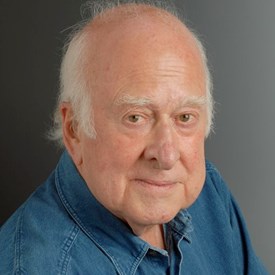|
HOME
The HET Group
FACULTY
STUDENTS
RESEARCH
PUBLICATIONS
COURSES
|
THE HIGGS PARTICLE
George Siopsis - April 18, 2019
|
|

After introducing the Maxwell equations and reviewing the salient features of
electromagnetism, I explain how the Maxwell equations can be modified to describe the weak interactions that are responsible for $\beta$-decay.
The journey takes us through spontaneous symmetry breaking and the Higgs mechanism which gives rise to the Higgs particle that seems to be of central importance to our existence.
It was discovered at the Large Hadron Collider (LHC) in Geneva, Switzerland in 2011.

The Nobel Prize in Physics 2013

François Englert |

Peter W. Higgs
|
The Nobel Prize in Physics 2013 was awarded jointly to François Englert and Peter W. Higgs "for the theoretical discovery of a mechanism that contributes to our understanding of the origin of mass of subatomic particles, and which recently was confirmed through the discovery of the predicted fundamental particle, by the ATLAS and CMS experiments at CERN's Large Hadron Collider"
|
TABLE OF CONTENTS
  Electromagnetism
Electromagnetism
  Weak interactions
Weak interactions
  Spontaneous symmetry breaking
Spontaneous symmetry breaking
|

 Department of Physics and Astronomy Department of Physics and Astronomy
 e-mail: siopsis AT tennessee DOT edu
e-mail: siopsis AT tennessee DOT edu
Voice: (865) 974-7846
 Fax: (865) 974-7843
Fax: (865) 974-7843
401 Nielsen Physics Bldg., The University of Tennessee, Knoxville,
TN 37996-1200, U.S.A.
|
![]()
![]()
